https://www.kermitlynch.com/blog/2017/05/04/from-the-archives-my-problems-with-white-wine/
https://www.kermitlynch.com/blog/2019/02/21/richard-olneys-final-book-reflexions/
Wine Strategies: https://www.kermitlynch.com/newsletters/0501-January2005.pdf
http://www.bradburykuett.com/2018/02/03/for-the-writer-jim-harrison-a-bandol-red-of-the-domaine-tempier-was-his-reverie-his-lyric/
https://www.kermitlynch.com/newsletters/0712-December2007.pdf
ONE GOOD THING
LEADS TO ANOTHER
by Jim Harrison
I
am intensely knowledgeable on all matters nutritional but somewhat
ineƒective in applying this knowledge to myself. A friend, the novelist Tom
McGuane, once said to me, “You can lecture a group of us on nutritional
health while chain smoking and drinking a couple of bottles of wine in less than
an hour.”
Sad but true, but how sad? Ben Franklin said, “Wine is constant proof that
God loves us and wants us to be happy.” Despite this many Americans own a
hopeless puritanical streak that makes them beat on themselves as if they were
building a tract house. The other day I took out a pound of side pork from the
refrigerator, exemplary side pork raised by E.T. Poultry which I favor above all
domestic pork. I put the package on the table and circled it nervously like a nun
tempted to jump over the convent wall and indulge in the lusts of the body.
My intellect warred against this side pork while my heart and taste buds surged.
I was again modern man at the banal crossroads where he always finds himself
bifurcated like Rumpelstiltskin.
Naturally the side pork won. My art needed it, plus I knew that a simple
bottle of Domaine La Tour Vieille would win the battle with pork fat if drunk
speedily enough to get down the gullet to disarm the gobbets of side pork. To
achieve health one must be able to visualize such things in terms of the inner
diorama.
A number of doctors have been amazed that I am still alive, but the explanation is simple: wine. I started out in a deep dark hole being born and raised in
northern Michigan which demographically is the center of stomach cancer in
the U.S. Up home, as it were, they love to fry everything and when short on
staples they favor fried fried. To be frank, the French raised me, though I didn’t
get over there until my thirties due to a thin wallet. Since my mid-teens I loved
and read studiously French literature so that at nineteen in Greenwich Village I
was scarcely going to drink California plonk while reading Baudelaire, Rimbaud, and Apollinaire. Instead I drank French plonk
la Roche, beside his plate, though this fine Burgundy is mostly aƒordable to
moguls who unlike me don’t have the time to hunt woodcock, grouse, doves,
quail, and Hungarian partridge. Since I love wild food and wine I have been
kept active in the sporting life by these addictions. I will shu‰e through the
outdoors for hours to shoot my dinner though in the case of woodcock they are
better hung for a few days. If the weather is too warm a 42-degree refrigerator
works fine, though you keep your eye on how you rotate the birds. I’ve never
had a woodcock turn “high” on me but you must be much more careful with
the white-breasted grouse. I have frequently eaten the “trail” of woodcock, the
entrails minus the gizzard, on toast, a French tradition that some of my American
friends are squeamish about. I insist that the best cooking method for woodcock
is to simply roast the birds over a woodfire making sure the breast interior is
pinkish red. Much like doves and mallards an overcooked woodcock is criminal. Last year near our winter “casita” on the Mexican border I shot well over
a hundred doves but when I cooked a few of them minutes too long my wife
was utterly disgusted. Perhaps I did something truly stupid like answering the
phone.
So wine fuels my sporting life but the hunting season ends and I become
a bird-watcher rather than a hunter partly to keep moving and make sure my
appetite is revved. Woodcock don’t freeze well but Hungarian partridge and
grouse do, plus there are gifts from friends of elk, antelope, moose, and venison,
which all cry out rather silently for red wine.
We had a nasty summer in Montana due to a two-month heat wave. I ate
sparingly and shed ounces like dandruƒ, sensing that I was becoming too light
on my feet for Montana winds. The heat forced me to drink whites, my favorites being Bouzeron and La Cadette’s Bourgogne blanc, their Vézelay blanc, too,
and also a lot of lowly Italian prosecco which was amenable to the weather. My
appetite recovered slightly when the garden flourished in August but it wasn’t
until September that I could again fully embrace my first love, French reds.
The City of Lyon has kindly decided to give me a medal and is flying me over
in a few weeks. Only by dint of tromping through forests and fields several hours
a day can one be physically ready for Lyon, which makes me the man for the
job. After each meal in Lyon I will climb the mountain, glance at the cathedral
but not actually go inside, and then trot back down. Bishop Irenaeus of Lyon
irritated me when in the second century he proclaimed animals don’t go to
heaven because they can’t contribute monetarily to the church. I adore the classic bistros in Lyon, also a restaurant called Aux Fins Gourmets. These sturdy folks
eat sturdily and I will ferret away a collection of fromage de tête (head cheese) in
my hotel room in case I awake in the night disconsolate.
After Lyon I will positively reconstruct the nature of my blood in Narbonne,
Collioure, and Bandol. Most intelligent people recall the established scientific
victory of the Mediterranean diet over half a dozen others. The eƒect of the
south is immediate. Once while writing for a week at the splendid Hotel Nord
Pinus in Arles, I became daily less somber and tormented so that what I wrote
there was untypically jubilant. Doubtless if I wrote a whole novel in the south
of France I would lose my winning reputation for melancholy. Once on the
streets of Arles, for instance, I met a very undoglike lassie who was half-French
and half-Egyptian. My knees buckled and I had to have two glasses of wine to
make my way a mere block to the hotel.
Our last evening at the cabin we had grouse and woodcock again, and a leg
of lamb from my neighbor’s ranch in Montana. A friend, Rick Baker, brought
along some Beychevelles from the eighties, a Grand Cru Mondot from Saint
Emilion, and more Domaine Tempiers. The Mondot was a little muddy, perhaps from shipment.
All in all it was a decidedly non-triumphant summer. In mid-September I
made game pies from venison, mallards, doves, Hungarian partridge, ground
veal, and pork fat with a lard pie crust. Superb. Unfortunately it was hot again
and I had to eat one with a white Cadette. It worked, but in the middle of the
snack it occurred to me that weather is God’s work while wine is man’s. René
Char told us not to live on regret like a wounded finch. A few years ago a friend
gave me an ’82 Pétrus and I swilled it before I learned I could have sold the
bottle and bought a ticket to France where I’m closer to the heart of the matter,
wine and its lover, food.
via: https://www.kermitlynch.com/newsletters/1008-August2010.pdf
WINE AND POETRY
by Jim Harrison
Women, Wine and Snuff
John Keats
Give me women, wine and snuff
Until I cry out “hold, enough!”
You may do so sans objection
Till the day of resurrection;
For bless my beard they aye shall be
My beloved Trinity.
This must have been written when John Keats was young and a bit of
a rowdy. Underneath each old poet wherever he goes is an immense
reservoir of sentimentality about his life as a young poet. When I was
nineteen in Greenwich Village one stew bum bar to the east of Bleecker past
MacDougal offered a glass of simple red for a quarter. On a possibly morose day
this single glass was capable of producing literary ecstasy. Occasionally in extremis my nifty budget was a dollar a day for food, another for wine, and the last
was for my seven-dollar-a-week room without a window. This austerity did not
quell my obsession at the time for Rimbaud and Keats, the latter being the most
singular lyric poet in English letters. As a mediocre student I wasn’t in the least
interested in critical assessments and more than fifty years later still am not. I was
drawn to what made my heart sing in what my father called “this vale of woe.”
This meant wine and poetry.
Wine crawls in the window of your life and never leaves. A young poet is at
a loss because his calling has set him outside of so many comforting boundaries
the culture offers and wine easily offers itself as a liquid fuel, making him think
he might belong in this hostile country. Even Vergil’s father chided him about
becoming a poet, saying, “Homer died broke.” Of course any young geek can
think of himself as a dark orphaned prince from another country. Whatever
works to keep the ego inflated without evidentiary fuel. One invariably becomes
a poet long before writing actual poems. It begins with a general reverence for
life and its intensely detailed existence, for women, trees, fish, dogs, rivers, birds,
and of course for wine. As the great philosopher Wit
Only yesterday did the circle of wisdom close more completely with a science
factoid from NPR. We are genetically related to yeast! One would have thought
so. We are fermented and naturally enough we ferment. The gods slipped us this
gift in prehistory, noting our hardships, our cold and hunger and our battles with
wild beasts. “O no, another glacier is headed our way, let’s drink some wine,”
one imagines them saying. Way back then in southern France in the locale of
many great present vineyards there were one-ton bears running around at top
speed on their hind legs, an unattractive fact.
It has been said by anthropologists that perhaps the Neanderthals lost out to
our species because they drank too much. Alcohol presents obvious dangers. The
guards of ancient Scandinavian kings had to be half bear and when drunk would
errantly kill a king in their enthusiasm. Just recently there was a convention of
seventy thousand AA members in San Antonio who must have been a disappointment to local restaurateurs whose profit margins depend on alcohol. Of
course, one cannot question the legitimacy of an organization that saves so many
from dying. Of my many poet friends, many have died from drink, though
predominantly from hard liquor. One friend, the luminous Nebraskan poet Ted
Kooser, for two years our Poet Laureate, told me he had to quit drinking decades
ago so that he’d stop falling down stairs. This seems a valid reason indeed. I had
to moderate in my mid-forties so that I wouldn’t have to quit. I had a fine cellar
at the time and the thought of not drinking it was unbearable. I also didn’t want
to spend the rest of my life not doing something. As the French poet Gérard de
Nerval said, “One must drink or someone will drink in their place.” Obviously,
though, one must give up a beautiful woman if you are abusing her.
Ikkyu, the renowned Zen master of the fifteenth century, was a bit unorthodox in saying that the Buddha can also be discovered in wine and in brothels.
He wrote:
Dead winter but our poetry glows:
Drunk after downing cup after cup.
Years since I enjoyed such sweet love play.
The moon disappears, dawn breaks, yet we hardly notice.
For a number of years in my late teens and early twenties I worked on a horticulture farm and part of my duties involved pruning grape vines. Pruning time
is usually cold, wet and muddy but in a vineyard you become intimate with the
mystery of wine. The vines and soil look dead and half frozen and you doubt
the future of everything, including yourself. But then spring comes and the vines
leaf out and you are lucky enough to have a girlfriend who likes to drive with
you into the countryside with a blanket and a bottle of seventy-cent Gallo red
and make love in a pasture or grain field. The wine, however cheap and it’s
what you can afford to carry in your 1947 Dodge, allows you to ignore the
mosquitoes.
Wine produces memory. If I drink a Brouilly in Montana, the wine inevitably
reproduces my sitting at Le Select on Montparnasse in Paris dozens of times drinking the same wine trying to recover from a day of interviews on a Paris book
tour. When I drink a bottle of Domaine Tempier Bandol in our casita near the
Mexican border, I invariably revisit my many meals cooked by Lulu Peyraud in
Bandol in southern France. My memory helps me eat them again. If I drink a
Bouzeron on a warm summer evening, I’m able to revisit some of the best trout
fishing of my life on a lovely river when we would finish our floating on the last
mile of river or so by opening a bottle of Bouzeron. We are delightfully trapped
by our memories. I can’t drink a bottle of Châteauneuf-du-Pape Vieux Télégraphe without revisiting a hotel bistro in Luzerne, Switzerland, where I ate a
large bowl of a peppery Basque baby goat stew. A sip and a bite. A bite and sip.
Goose bumps come with the divine conjunction of food and wine.
An initial glass of whiskey might be helpful after a cold October day of bird
hunting but I’ve tended to stick to wine in my hunting and fishing. Also, the
sudden jolts offered by hard liquor lessen the possibility of making a good dinner,
while the gradual all-suffocating warmth of wine tends to increase one’s cooking
attention.
More than thirty years ago I wrote a “Drinking Song” that begins with
I want to die in the saddle. An enemy of civilization
I want to walk around in the woods, fish and drink.
I’m not presenting this necessarily as an article of faith but close to it, like
Keats’s Trinity of wine, women and snuff. Sad to say, Keats died at age twentyeight of tuberculosis, a disease that cheated the world of many potential glories.
I close with a glorious note on Claret from his letters.
I never drink now above three glasses of wine—and never any spirits and water. Though
by the bye, the other day Woodhouse took me to his coffee house—and ordered a
Bottle of Claret—now I like Claret, whenever I can have Claret I must drink it,—’t
is the only palate affair that I am at all sensual in. Would it not be a good speck
[speculation] to send you some vine roots—could it be done? I’ll enquire—If you could
make some wine like Claret to drink on summer evenings in an arbour! For really ’t is
so fine—it fills one’s mouth with a gushing freshness—then goes down cool and feverless—then you do not feel it quarrelling with your liver—no, it is rather a Peacemaker,
and lies as quiet as it did in the grape; then it is as fragrant as the Queen Bee, and the
more ethereal Part of it mounts into the brain, not assaulting the cerebral apartments
like a bully in a bad-house looking for his trull and hurrying from door to door bouncing
against the wainstcoat [wainscot], but rather walks like Aladdin about his own enchanted palace so gently that you do not feel his step. Other wines of a heavy and
spirituous nature transform a Man to a Silenus: this makes him a Hermes—and gives
a Woman the soul and immortality of Ariadne, for whom Bacchus always kept a good
cellar of claret—and even of that he could never persuade her to take above two cups. I
said this same claret is the only palate-passion I have—I forgot game—I must plead
guilty to the breast of a Partridge, the back of a hare, the backbone of a grouse, the wing
and side of a Pheasant and a Woodcock passim. Talking of game (I wish I could make
it), the Lady whom I met at Hastings and of whom I said something in my last I think
has lately made me many presents of game, and enabled me to make as many. She
made me take home a Pheasant the other day, which I gave to Mrs. Dilke; on which
to-morrow Rice, Reynolds and the Wentworthians will dine next door.
—John Keats, from Letter to George and Georgiana Keats, February 18, 1819
Sunday, May 12, 2019
Saturday, May 11, 2019
Gojo Ethiopian, Phoenix Food
https://www.gojoethrestaurant.com/
Good Ethiopian food and beer, and for the right price. Also try the coffee as it is worth the wait! Overall, the food and flavors were really great. Like a cultural slice of Ethiopia off Thomas in East Phoenix, we will be going back to enjoy the Meat and Veggies combo and veggie samosa with hot pepper sauce. Check this place out next time you are in Phoenix.

Good Ethiopian food and beer, and for the right price. Also try the coffee as it is worth the wait! Overall, the food and flavors were really great. Like a cultural slice of Ethiopia off Thomas in East Phoenix, we will be going back to enjoy the Meat and Veggies combo and veggie samosa with hot pepper sauce. Check this place out next time you are in Phoenix.

Thursday, May 9, 2019
Mogollon Rim and White Mountains Fishing Report Arizona
https://fishaz.azgfd.com/fishingwaters/fishing-report-mogollon-rim-white-mountains/
Angler Report:

Tunnel Lake (Greer)
Steve S. and Ron L. caught 2-day limits on Sunday and Monday at Tunnel Lake near Greer. They were using Powerbait.
Steve with a “big mouthed” and very colorful 16” rainbow.
Ron showing the bigger ones caught on Monday. These trout measured 18” to 15”

They also spotted an array of wildlife: bear, Mexican grey wolf, and lots of elk, deer, and antelope.
Fishing is good at most lakes. All lakes are full from the good winter we had, except for Big, Crescent, and Carnero, which have extremely small watersheds and will take several good winters to fill entirely. The water levels at these did come up substantially but just didn’t fill. But nearly all lakes have been stocked with trout and water quality (and quantity) is good.

Parking lot construction continues at Woods Canyon Lake. The boat ramp is closed until around May 16. George Andrejko/AZGFD
The boat ramp at Woods Canyon Lake is still closed for construction and repaving, and is scheduled to open fully on May 16. Anglers have full access to the shoreline at Woods Canyon Lake and can rent a boat from the concessionaire, just can’t launch their own boat at the ramp yet.
Stocking has started in streams in the White Mountains, including Silver Creek, Little Colorado River in Greer, West Fork LCR at Sheeps Crossing, East Fork Black River and West Fork Black River. Flows are still a little high and cold due to some snowmelt runoff occurring from Mt. Baldy, but all the stocked streams are fishable.
Mike Lopez is AZGFD’s fish program manager out of Pinetop
Hotshot Truck Sleeper Pictures
Just some sleeper configurations on different hotshot trucks. Would be nice to have a spot to sleep to help avoid the expensive hotel rooms, and not having to deal with driving into an urban center. The hotshot truck sleeper allows for convenience and a money saving home away from home on those longer trips.
Jim Harrison "Do Dogs Have Souls?"
via ://lithub.com/do-dogs-have-souls-and-other-questions-from-jim-harrison/
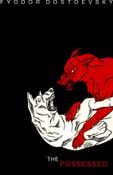 1. The Possessed by Fyodor Dostoevsky (1872). Dostoevsky’s signature theme —the future of morality and the human soul in a Godless world —takes flight in this harrowing portrait of revolutionary terrorists who have surrendered their humanity to their ideals. The political satire throbs with urgency, but Dostoevsky raises this work to the level of art through rich characterizations of his combative principals: the well-meaning, ineffectual philosophical theorist Stepan Verkhovensky; his true-believing, monomaniacal son Peter; the conflicted, ” serf Shatov; and two vivid embodiments of good and evil —saintly Bishop Tikhon and urbane, satanic Nicolas Stavrogin.
1. The Possessed by Fyodor Dostoevsky (1872). Dostoevsky’s signature theme —the future of morality and the human soul in a Godless world —takes flight in this harrowing portrait of revolutionary terrorists who have surrendered their humanity to their ideals. The political satire throbs with urgency, but Dostoevsky raises this work to the level of art through rich characterizations of his combative principals: the well-meaning, ineffectual philosophical theorist Stepan Verkhovensky; his true-believing, monomaniacal son Peter; the conflicted, ” serf Shatov; and two vivid embodiments of good and evil —saintly Bishop Tikhon and urbane, satanic Nicolas Stavrogin.
 2. In Search of Lost Time by Marcel Proust (1913–27). It’s about time. No, really. This seven-volume, three-thousand-page work is only superficially a mordant critique of French (mostly high) society in the belle époque. Both as author and as “Marcel,” the first-person narrator whose childhood memories are evoked by a crumbling madeleine cookie, Proust asks some of the same questions Einstein did about our notions of time and memory. As we follow the affairs, the badinage, and the betrayals of dozens of characters over the years, time is the highway and memory the driver.
2. In Search of Lost Time by Marcel Proust (1913–27). It’s about time. No, really. This seven-volume, three-thousand-page work is only superficially a mordant critique of French (mostly high) society in the belle époque. Both as author and as “Marcel,” the first-person narrator whose childhood memories are evoked by a crumbling madeleine cookie, Proust asks some of the same questions Einstein did about our notions of time and memory. As we follow the affairs, the badinage, and the betrayals of dozens of characters over the years, time is the highway and memory the driver.
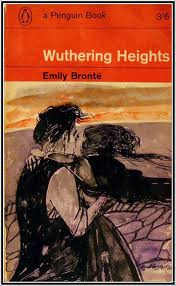 3. Wuthering Heights by Emily Brontë (1847). The author’s only novel, published a year before her death, centers on the doomed love between Heathcliff, a tormented orphan, and Catherine Earnshaw, his benefactor’s vain and willful daughter. Passion brings them together, but class differences, and the bitterness it inspires, keeps them apart and continues to take its toll on the next generation. Wuthering Heights tells you why they say that love hurts.
3. Wuthering Heights by Emily Brontë (1847). The author’s only novel, published a year before her death, centers on the doomed love between Heathcliff, a tormented orphan, and Catherine Earnshaw, his benefactor’s vain and willful daughter. Passion brings them together, but class differences, and the bitterness it inspires, keeps them apart and continues to take its toll on the next generation. Wuthering Heights tells you why they say that love hurts.
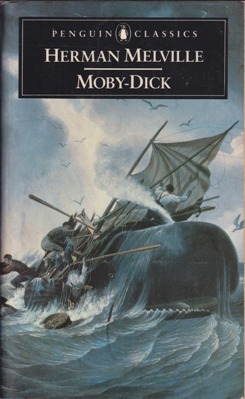 4. Moby-Dick by Herman Melville (1851). This sweeping saga of obsession, vanity, and vengeance at sea can be read as a harrowing parable, a gripping adventure story, or a semiscientific chronicle of the whaling industry. No matter, the book rewards patient readers with some of fiction’s most memorable characters, from mad Captain Ahab to the titular white whale that crippled him, from the honorable pagan Queequeg to our insightful narrator/surrogate (“Call me”) Ishmael, to that hell-bent vessel itself, the Pequod.
4. Moby-Dick by Herman Melville (1851). This sweeping saga of obsession, vanity, and vengeance at sea can be read as a harrowing parable, a gripping adventure story, or a semiscientific chronicle of the whaling industry. No matter, the book rewards patient readers with some of fiction’s most memorable characters, from mad Captain Ahab to the titular white whale that crippled him, from the honorable pagan Queequeg to our insightful narrator/surrogate (“Call me”) Ishmael, to that hell-bent vessel itself, the Pequod.
 5. Ulysses by James Joyce (1922). Filled with convoluted plotting, scrambled syntax, puns, neologisms, and arcane mythological allusions, Ulysses recounts the misadventures of schlubby Dublin advertising salesman Leopold Bloom on a single day, June 16, 1904. As Everyman Bloom and a host of other characters act out, on a banal and quotidian scale, the major episodes of Homer’s Odyssey —including encounters with modern-day sirens and a Cyclops —Joyce’s bawdy mock-epic suggests the improbability, perhaps even the pointlessness, of heroism in the modern age.
5. Ulysses by James Joyce (1922). Filled with convoluted plotting, scrambled syntax, puns, neologisms, and arcane mythological allusions, Ulysses recounts the misadventures of schlubby Dublin advertising salesman Leopold Bloom on a single day, June 16, 1904. As Everyman Bloom and a host of other characters act out, on a banal and quotidian scale, the major episodes of Homer’s Odyssey —including encounters with modern-day sirens and a Cyclops —Joyce’s bawdy mock-epic suggests the improbability, perhaps even the pointlessness, of heroism in the modern age.
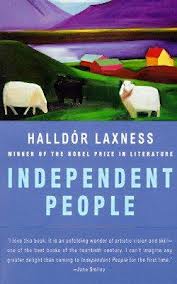 6. Independent People by Halldór Laxness (1934). The Icelandic Nobel laureate’s best novel is a chronicle of endurance and survival, whose stubborn protagonist Bjartür “of Summerhouses” is a sheepherder at odds with inclement weather, poverty, society in particular and authority in general, and his own estranged family. Laxness unflinchingly dramatizes Bjartür’s unloving, combative relationships with his step-daughter Asta and frail son Nonni (a possible authorial surrogate)—yet finds the perverse heroism in this bad shepherd’s compulsive pursuit of freedom (from even the Irish sorcerer who had cursed his land). This is an antihero for whom readers will find themselves cheering.
6. Independent People by Halldór Laxness (1934). The Icelandic Nobel laureate’s best novel is a chronicle of endurance and survival, whose stubborn protagonist Bjartür “of Summerhouses” is a sheepherder at odds with inclement weather, poverty, society in particular and authority in general, and his own estranged family. Laxness unflinchingly dramatizes Bjartür’s unloving, combative relationships with his step-daughter Asta and frail son Nonni (a possible authorial surrogate)—yet finds the perverse heroism in this bad shepherd’s compulsive pursuit of freedom (from even the Irish sorcerer who had cursed his land). This is an antihero for whom readers will find themselves cheering.
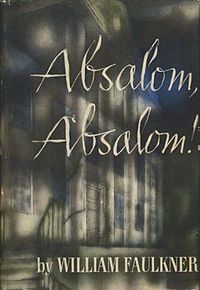 7. Absalom, Absalom! by William Faulkner (1936). Weaving mythic tales of biblical urgency with the experimental techniques of high modernism, Faulkner bridged the past and future. This is the story of Thomas Sutpen, a rough-hewn striver who came to Mississippi in 1833 with a gang of wild slaves from Haiti to build a dynasty. Almost in reach, his dream is undone by plagues of biblical (and Faulknerian) proportions: racism, incest, war, fratricide, pride, and jealousy. Through the use of multiple narrators, Faulkner turns this gripping Yoknapatawpha saga into a profound and dazzling meditation on truth, memory, history, and literature itself.
7. Absalom, Absalom! by William Faulkner (1936). Weaving mythic tales of biblical urgency with the experimental techniques of high modernism, Faulkner bridged the past and future. This is the story of Thomas Sutpen, a rough-hewn striver who came to Mississippi in 1833 with a gang of wild slaves from Haiti to build a dynasty. Almost in reach, his dream is undone by plagues of biblical (and Faulknerian) proportions: racism, incest, war, fratricide, pride, and jealousy. Through the use of multiple narrators, Faulkner turns this gripping Yoknapatawpha saga into a profound and dazzling meditation on truth, memory, history, and literature itself.
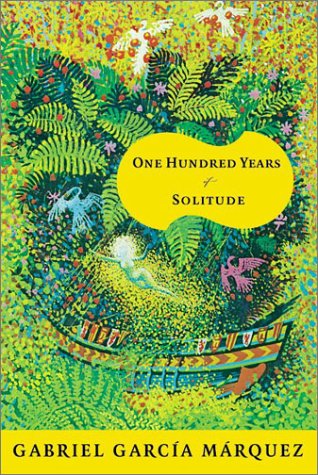 8. One Hundred Years of Solitude by Gabriel García Márquez (1967). Widely considered the most popular work in Spanish since Don Quixote, this novel —part fantasy, part social history of Colombia — sparked fiction’s “Latin boom” and the popularization of magic realism. Over a century that seems to move backward and forward simultaneously, the forgotten and offhandedly magical village of Macondo — home to a Faulknerian plethora of incest, floods, massacres, civil wars, dreamers, prudes, and prostitutes — loses its Edenic innocence as it is increasingly exposed to civilization.
8. One Hundred Years of Solitude by Gabriel García Márquez (1967). Widely considered the most popular work in Spanish since Don Quixote, this novel —part fantasy, part social history of Colombia — sparked fiction’s “Latin boom” and the popularization of magic realism. Over a century that seems to move backward and forward simultaneously, the forgotten and offhandedly magical village of Macondo — home to a Faulknerian plethora of incest, floods, massacres, civil wars, dreamers, prudes, and prostitutes — loses its Edenic innocence as it is increasingly exposed to civilization.
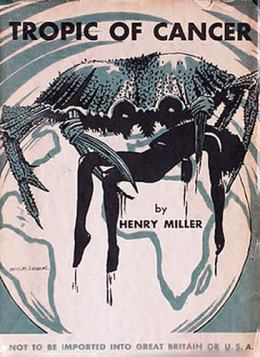 9. Tropic of Cancer by Henry Miller (1934). Banned in America for twenty-seven years because it was considered obscene, this autobiographical novel describes the author’s hand-to-mouth existence in Paris during the early 1930s. A later inspiration to the Beat generation, Miller offers various philosophical interludes expressing his joy in life, hostility to social convention, and reverence for women and sex, which he describes with abandon.
9. Tropic of Cancer by Henry Miller (1934). Banned in America for twenty-seven years because it was considered obscene, this autobiographical novel describes the author’s hand-to-mouth existence in Paris during the early 1930s. A later inspiration to the Beat generation, Miller offers various philosophical interludes expressing his joy in life, hostility to social convention, and reverence for women and sex, which he describes with abandon.
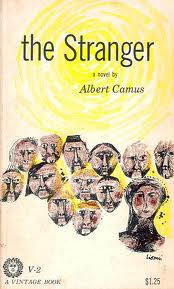 10. The Stranger by Albert Camus (1942). The opening lines—“Mother died today. Or, maybe, yesterday. I can’t be sure”—epitomize Camus’s celebrated notions of “the absurd.” His narrator, Meursault, a wretched little Algerian clerk sentenced to death for the murder, feels nothing: no remorse, love, guilt, grief, or hope. But he’s not a sociopath; he’s just honest. An embodiment of existential philosophy, he believes in no higher power and accepts that we are born only to die. Our only choice is to act “as if” life has meaning and thereby gain some freedom.
10. The Stranger by Albert Camus (1942). The opening lines—“Mother died today. Or, maybe, yesterday. I can’t be sure”—epitomize Camus’s celebrated notions of “the absurd.” His narrator, Meursault, a wretched little Algerian clerk sentenced to death for the murder, feels nothing: no remorse, love, guilt, grief, or hope. But he’s not a sociopath; he’s just honest. An embodiment of existential philosophy, he believes in no higher power and accepts that we are born only to die. Our only choice is to act “as if” life has meaning and thereby gain some freedom.
Jim Harrison's Top Ten List
 1. The Possessed by Fyodor Dostoevsky (1872). Dostoevsky’s signature theme —the future of morality and the human soul in a Godless world —takes flight in this harrowing portrait of revolutionary terrorists who have surrendered their humanity to their ideals. The political satire throbs with urgency, but Dostoevsky raises this work to the level of art through rich characterizations of his combative principals: the well-meaning, ineffectual philosophical theorist Stepan Verkhovensky; his true-believing, monomaniacal son Peter; the conflicted, ” serf Shatov; and two vivid embodiments of good and evil —saintly Bishop Tikhon and urbane, satanic Nicolas Stavrogin.
1. The Possessed by Fyodor Dostoevsky (1872). Dostoevsky’s signature theme —the future of morality and the human soul in a Godless world —takes flight in this harrowing portrait of revolutionary terrorists who have surrendered their humanity to their ideals. The political satire throbs with urgency, but Dostoevsky raises this work to the level of art through rich characterizations of his combative principals: the well-meaning, ineffectual philosophical theorist Stepan Verkhovensky; his true-believing, monomaniacal son Peter; the conflicted, ” serf Shatov; and two vivid embodiments of good and evil —saintly Bishop Tikhon and urbane, satanic Nicolas Stavrogin. 2. In Search of Lost Time by Marcel Proust (1913–27). It’s about time. No, really. This seven-volume, three-thousand-page work is only superficially a mordant critique of French (mostly high) society in the belle époque. Both as author and as “Marcel,” the first-person narrator whose childhood memories are evoked by a crumbling madeleine cookie, Proust asks some of the same questions Einstein did about our notions of time and memory. As we follow the affairs, the badinage, and the betrayals of dozens of characters over the years, time is the highway and memory the driver.
2. In Search of Lost Time by Marcel Proust (1913–27). It’s about time. No, really. This seven-volume, three-thousand-page work is only superficially a mordant critique of French (mostly high) society in the belle époque. Both as author and as “Marcel,” the first-person narrator whose childhood memories are evoked by a crumbling madeleine cookie, Proust asks some of the same questions Einstein did about our notions of time and memory. As we follow the affairs, the badinage, and the betrayals of dozens of characters over the years, time is the highway and memory the driver. 3. Wuthering Heights by Emily Brontë (1847). The author’s only novel, published a year before her death, centers on the doomed love between Heathcliff, a tormented orphan, and Catherine Earnshaw, his benefactor’s vain and willful daughter. Passion brings them together, but class differences, and the bitterness it inspires, keeps them apart and continues to take its toll on the next generation. Wuthering Heights tells you why they say that love hurts.
3. Wuthering Heights by Emily Brontë (1847). The author’s only novel, published a year before her death, centers on the doomed love between Heathcliff, a tormented orphan, and Catherine Earnshaw, his benefactor’s vain and willful daughter. Passion brings them together, but class differences, and the bitterness it inspires, keeps them apart and continues to take its toll on the next generation. Wuthering Heights tells you why they say that love hurts. 4. Moby-Dick by Herman Melville (1851). This sweeping saga of obsession, vanity, and vengeance at sea can be read as a harrowing parable, a gripping adventure story, or a semiscientific chronicle of the whaling industry. No matter, the book rewards patient readers with some of fiction’s most memorable characters, from mad Captain Ahab to the titular white whale that crippled him, from the honorable pagan Queequeg to our insightful narrator/surrogate (“Call me”) Ishmael, to that hell-bent vessel itself, the Pequod.
4. Moby-Dick by Herman Melville (1851). This sweeping saga of obsession, vanity, and vengeance at sea can be read as a harrowing parable, a gripping adventure story, or a semiscientific chronicle of the whaling industry. No matter, the book rewards patient readers with some of fiction’s most memorable characters, from mad Captain Ahab to the titular white whale that crippled him, from the honorable pagan Queequeg to our insightful narrator/surrogate (“Call me”) Ishmael, to that hell-bent vessel itself, the Pequod. 5. Ulysses by James Joyce (1922). Filled with convoluted plotting, scrambled syntax, puns, neologisms, and arcane mythological allusions, Ulysses recounts the misadventures of schlubby Dublin advertising salesman Leopold Bloom on a single day, June 16, 1904. As Everyman Bloom and a host of other characters act out, on a banal and quotidian scale, the major episodes of Homer’s Odyssey —including encounters with modern-day sirens and a Cyclops —Joyce’s bawdy mock-epic suggests the improbability, perhaps even the pointlessness, of heroism in the modern age.
5. Ulysses by James Joyce (1922). Filled with convoluted plotting, scrambled syntax, puns, neologisms, and arcane mythological allusions, Ulysses recounts the misadventures of schlubby Dublin advertising salesman Leopold Bloom on a single day, June 16, 1904. As Everyman Bloom and a host of other characters act out, on a banal and quotidian scale, the major episodes of Homer’s Odyssey —including encounters with modern-day sirens and a Cyclops —Joyce’s bawdy mock-epic suggests the improbability, perhaps even the pointlessness, of heroism in the modern age. 6. Independent People by Halldór Laxness (1934). The Icelandic Nobel laureate’s best novel is a chronicle of endurance and survival, whose stubborn protagonist Bjartür “of Summerhouses” is a sheepherder at odds with inclement weather, poverty, society in particular and authority in general, and his own estranged family. Laxness unflinchingly dramatizes Bjartür’s unloving, combative relationships with his step-daughter Asta and frail son Nonni (a possible authorial surrogate)—yet finds the perverse heroism in this bad shepherd’s compulsive pursuit of freedom (from even the Irish sorcerer who had cursed his land). This is an antihero for whom readers will find themselves cheering.
6. Independent People by Halldór Laxness (1934). The Icelandic Nobel laureate’s best novel is a chronicle of endurance and survival, whose stubborn protagonist Bjartür “of Summerhouses” is a sheepherder at odds with inclement weather, poverty, society in particular and authority in general, and his own estranged family. Laxness unflinchingly dramatizes Bjartür’s unloving, combative relationships with his step-daughter Asta and frail son Nonni (a possible authorial surrogate)—yet finds the perverse heroism in this bad shepherd’s compulsive pursuit of freedom (from even the Irish sorcerer who had cursed his land). This is an antihero for whom readers will find themselves cheering. 7. Absalom, Absalom! by William Faulkner (1936). Weaving mythic tales of biblical urgency with the experimental techniques of high modernism, Faulkner bridged the past and future. This is the story of Thomas Sutpen, a rough-hewn striver who came to Mississippi in 1833 with a gang of wild slaves from Haiti to build a dynasty. Almost in reach, his dream is undone by plagues of biblical (and Faulknerian) proportions: racism, incest, war, fratricide, pride, and jealousy. Through the use of multiple narrators, Faulkner turns this gripping Yoknapatawpha saga into a profound and dazzling meditation on truth, memory, history, and literature itself.
7. Absalom, Absalom! by William Faulkner (1936). Weaving mythic tales of biblical urgency with the experimental techniques of high modernism, Faulkner bridged the past and future. This is the story of Thomas Sutpen, a rough-hewn striver who came to Mississippi in 1833 with a gang of wild slaves from Haiti to build a dynasty. Almost in reach, his dream is undone by plagues of biblical (and Faulknerian) proportions: racism, incest, war, fratricide, pride, and jealousy. Through the use of multiple narrators, Faulkner turns this gripping Yoknapatawpha saga into a profound and dazzling meditation on truth, memory, history, and literature itself. 8. One Hundred Years of Solitude by Gabriel García Márquez (1967). Widely considered the most popular work in Spanish since Don Quixote, this novel —part fantasy, part social history of Colombia — sparked fiction’s “Latin boom” and the popularization of magic realism. Over a century that seems to move backward and forward simultaneously, the forgotten and offhandedly magical village of Macondo — home to a Faulknerian plethora of incest, floods, massacres, civil wars, dreamers, prudes, and prostitutes — loses its Edenic innocence as it is increasingly exposed to civilization.
8. One Hundred Years of Solitude by Gabriel García Márquez (1967). Widely considered the most popular work in Spanish since Don Quixote, this novel —part fantasy, part social history of Colombia — sparked fiction’s “Latin boom” and the popularization of magic realism. Over a century that seems to move backward and forward simultaneously, the forgotten and offhandedly magical village of Macondo — home to a Faulknerian plethora of incest, floods, massacres, civil wars, dreamers, prudes, and prostitutes — loses its Edenic innocence as it is increasingly exposed to civilization. 9. Tropic of Cancer by Henry Miller (1934). Banned in America for twenty-seven years because it was considered obscene, this autobiographical novel describes the author’s hand-to-mouth existence in Paris during the early 1930s. A later inspiration to the Beat generation, Miller offers various philosophical interludes expressing his joy in life, hostility to social convention, and reverence for women and sex, which he describes with abandon.
9. Tropic of Cancer by Henry Miller (1934). Banned in America for twenty-seven years because it was considered obscene, this autobiographical novel describes the author’s hand-to-mouth existence in Paris during the early 1930s. A later inspiration to the Beat generation, Miller offers various philosophical interludes expressing his joy in life, hostility to social convention, and reverence for women and sex, which he describes with abandon. 10. The Stranger by Albert Camus (1942). The opening lines—“Mother died today. Or, maybe, yesterday. I can’t be sure”—epitomize Camus’s celebrated notions of “the absurd.” His narrator, Meursault, a wretched little Algerian clerk sentenced to death for the murder, feels nothing: no remorse, love, guilt, grief, or hope. But he’s not a sociopath; he’s just honest. An embodiment of existential philosophy, he believes in no higher power and accepts that we are born only to die. Our only choice is to act “as if” life has meaning and thereby gain some freedom.
10. The Stranger by Albert Camus (1942). The opening lines—“Mother died today. Or, maybe, yesterday. I can’t be sure”—epitomize Camus’s celebrated notions of “the absurd.” His narrator, Meursault, a wretched little Algerian clerk sentenced to death for the murder, feels nothing: no remorse, love, guilt, grief, or hope. But he’s not a sociopath; he’s just honest. An embodiment of existential philosophy, he believes in no higher power and accepts that we are born only to die. Our only choice is to act “as if” life has meaning and thereby gain some freedom.
Subscribe to:
Posts (Atom)